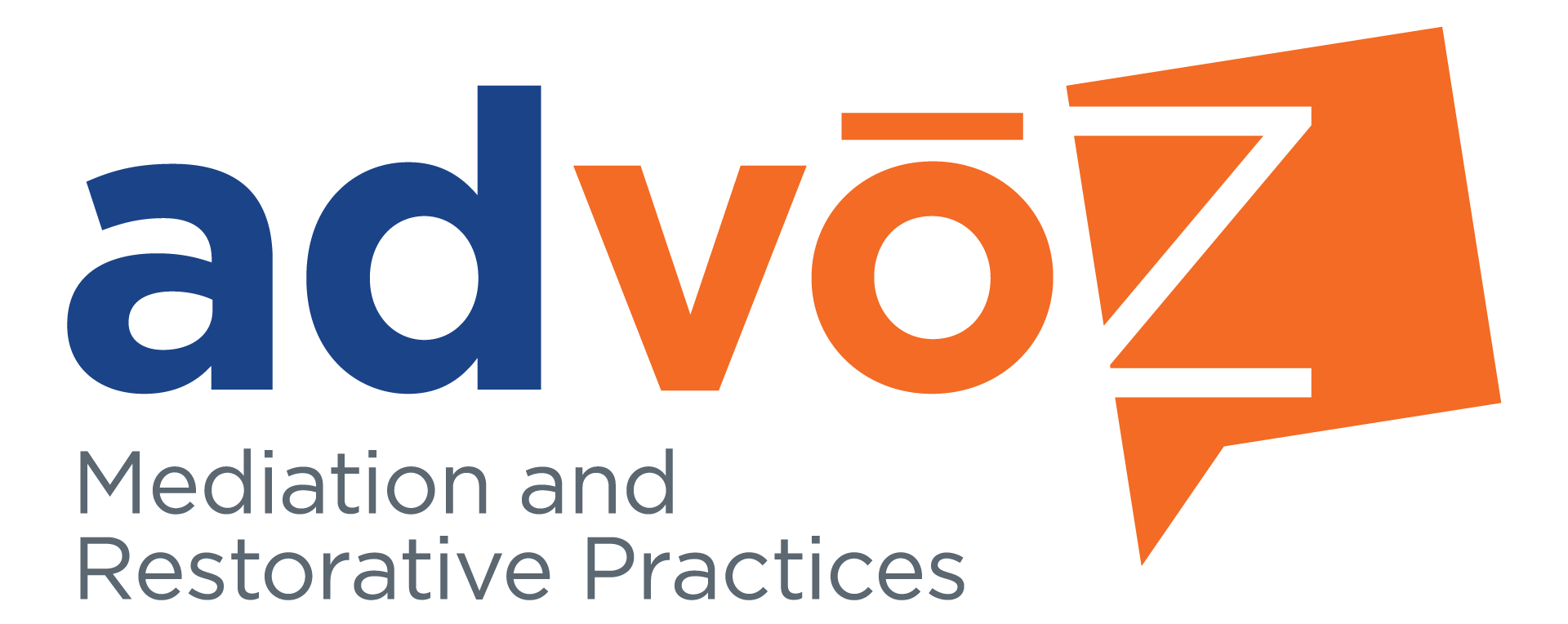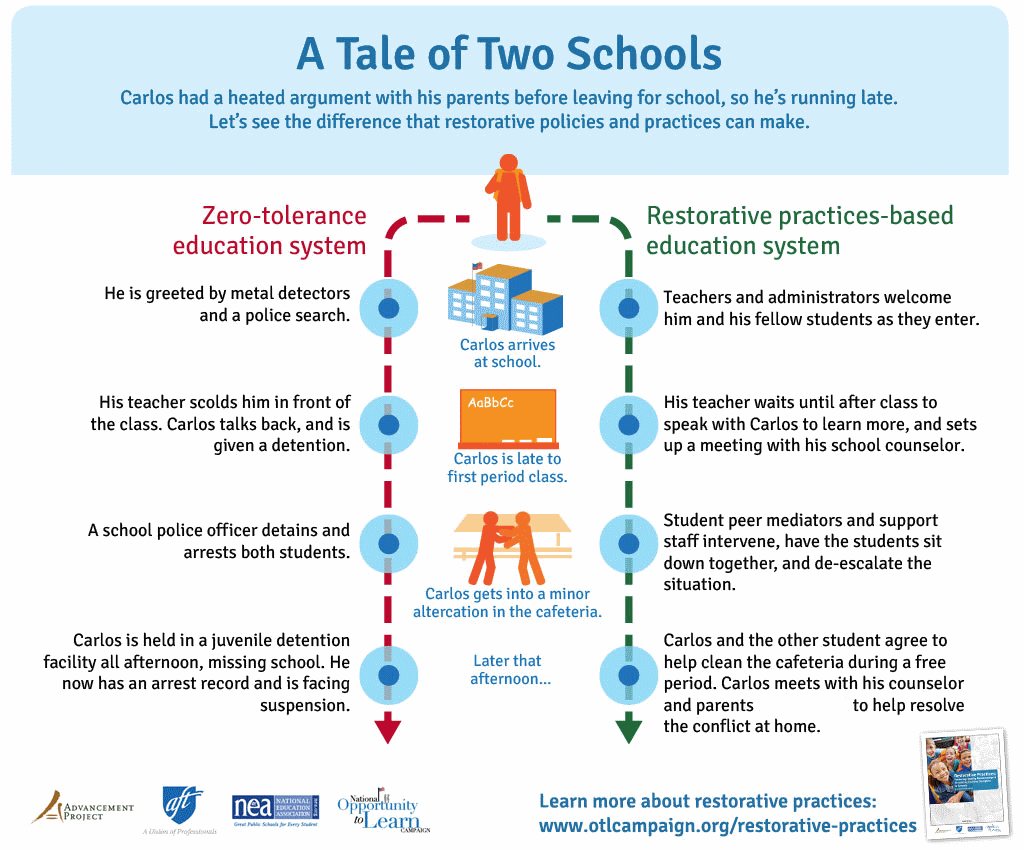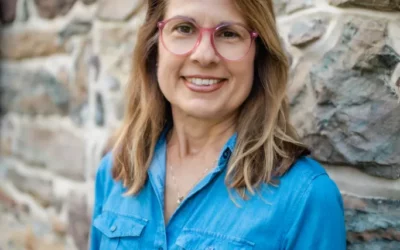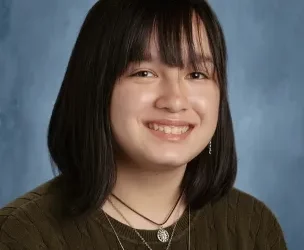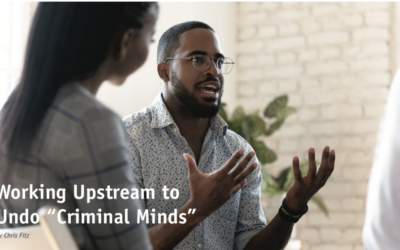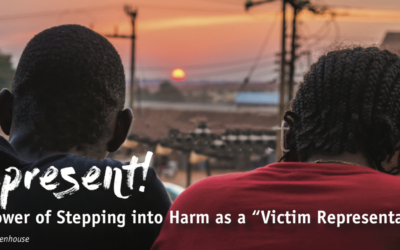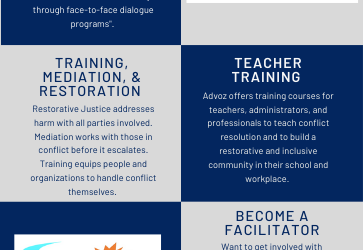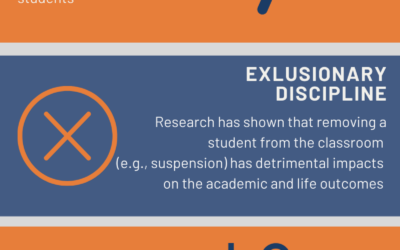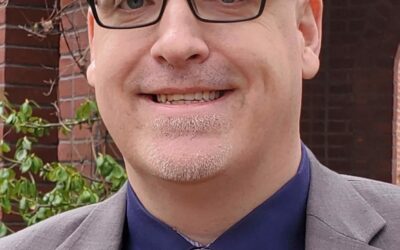The graphic above illustrates the positive differences we can make when we consistently put in the time and energy to shift the culture of our institutions with a restorative justice lens. Changing our community’s culture of conflict is no small goal, but it’s a worthy one because the people at the center of it, our kids, are worth it.
What is a restorative culture? In essence, it’s the ongoing balance of participation for those involved with three goals: 1) accountability to repair harm, 2) enhancing the competence for those committing harm and 3) community safety.
Public schools have for years walked a fine line between the accountability and support of their students as they seek to create a positive learning environment free of violence, bullying and threats. Because students are mandated to attend school, they are also create a de-facto community space in which numerous norms, strengths and challenges converge that reflect our dynamic society.
Zero tolerance education systems were popular among schools searching for simple catch-all solutions to improving students’ behaviors inside and outside the school–with an emphasis on safety. Such schools have used suspension and expulsions that address wrong-doing and removal of those who violate norms or threaten safety. High suspension rates do not correlate to better student development; studies show that the opposite occurs.
Fania Davis, Phd, is the founder of RJOY: Restorative Justice for Oakland Youth and the principle pioneering advocate behind the implementation of restorative justice across the public Oakland Unified School District, serving more than 37,000 students in 118 schools.
Dr. Davis’s experience, not just implementing restorative justice on a large scale but also researching its effectiveness, has much to offer Lancaster County on its own journey to being a more equitable and restorative community. For that reason, Advoz is inviting her to contribute to a Cross-Community Conversation on January 20th with a number of youth stakeholders from education, law enforcement, courts and community leaders. It’s an effort made possible thanks to the partnership with Lancaster County Juvenile Probation and Community Action Partnership and with sponsorship of the Lancaster County Community Foundation and the High Foundation.
Peacemaking is work. It requires attentiveness, perseverance, even blind faith to go the extra mile with each person or organization involved.
It’s a mile worth walking, as we have watched the payoff for places who invest in restorative approaches. In one school district, we worked with teachers for a year only to see the school discontinue its effort. They later established a full-time “restorative facilitator” who is now a resource person for Advoz. It’s one of many steps shifting toward a restorative culture. Read more about effectiveness of implementing Restorative Justice in other schools in Pennsylvania in a study conducted by the Rand Corporation.
Your support of Advoz helps us take one restorative step at a time alongside the many critical institutions here in our community. This year, we raised more than $30,000 in matching “Back to School” support for dozens of troubled youth to get a fresh start through Advoz’s existing restorative justice “victim-offender” dialogue. In November, we raised an additional $33,730 in Lancaster’s Extraordinary Give.
The Cross-Community Conversation with Dr. Fania Davis is another step made possible with the support of our partners and people like you.
Infographic credit: Schott Foundation, Advancement Project, American Federation of Teachers and National Education Association. More at: http://schottfoundation.org/restorative-practices.
